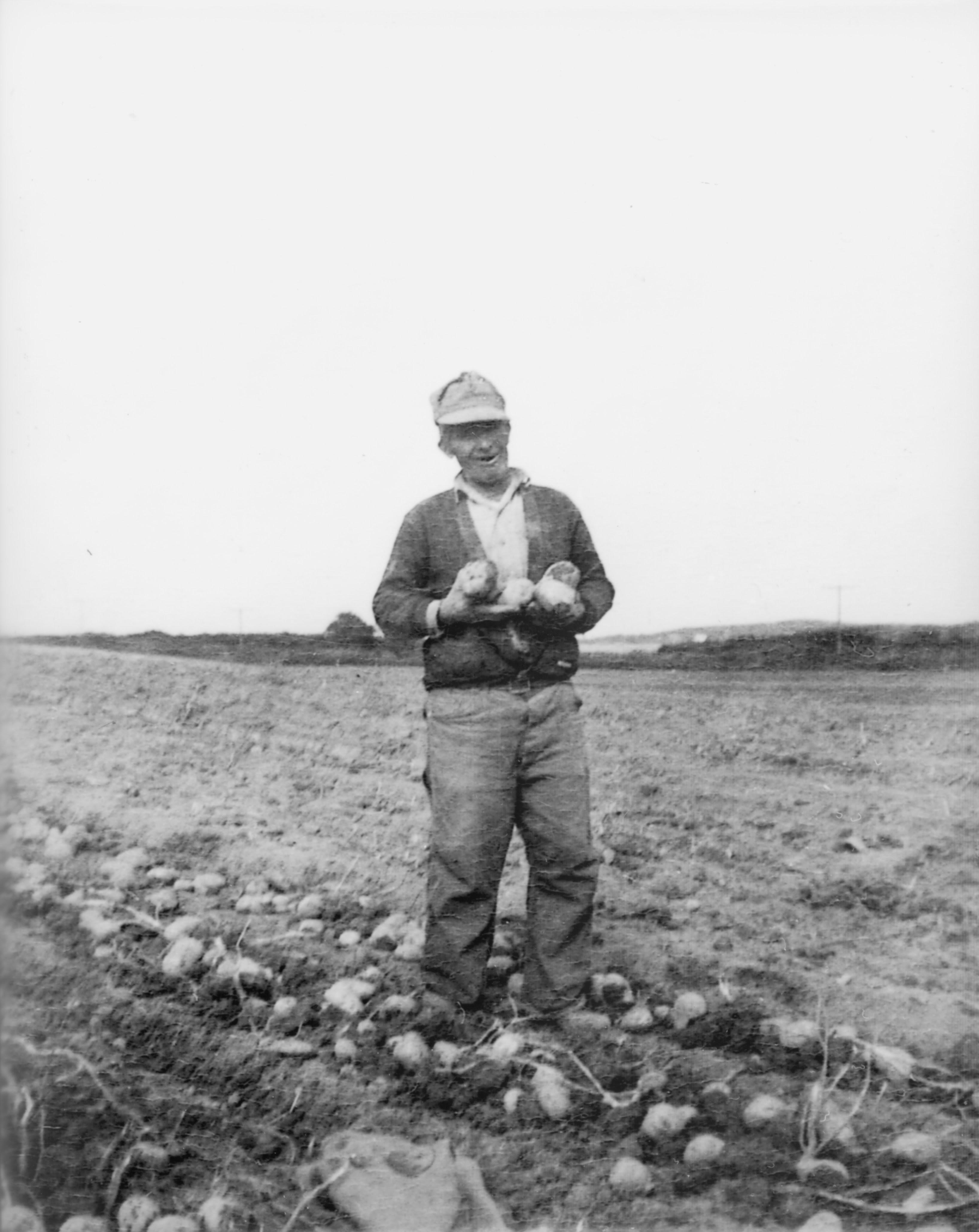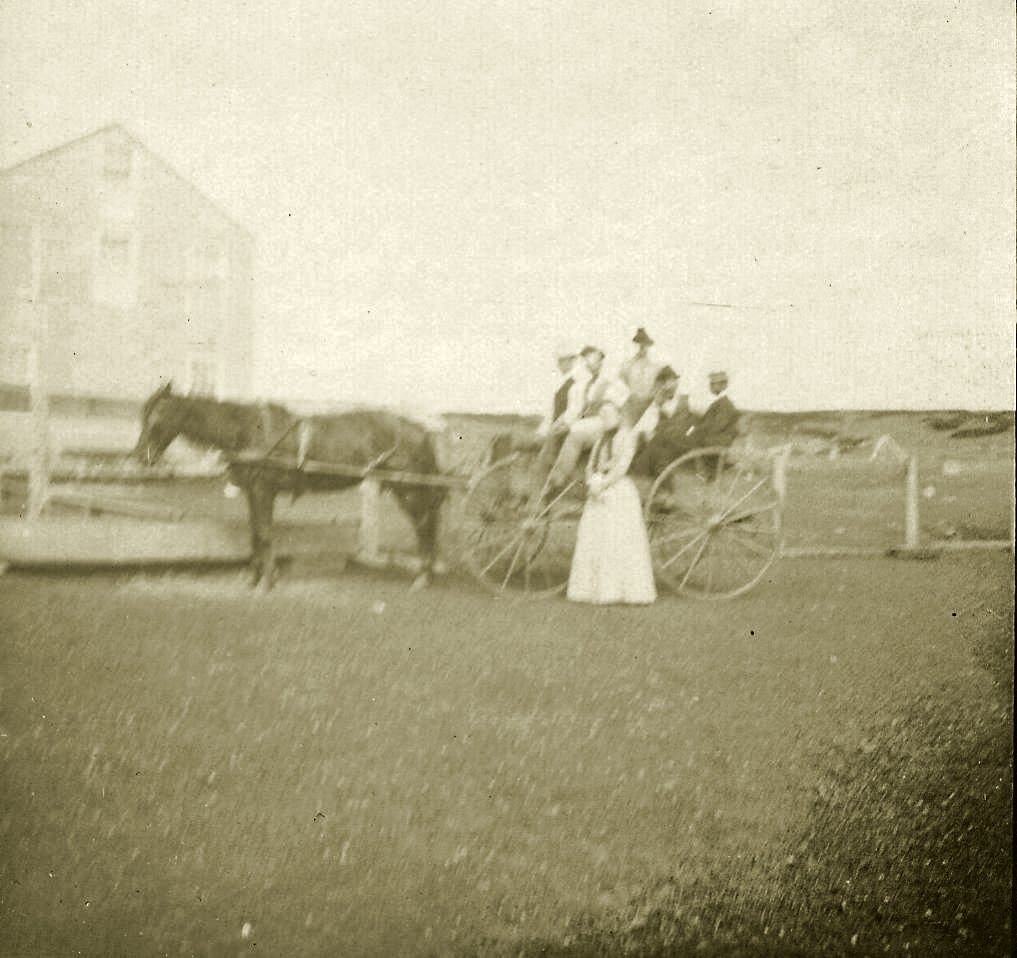In 1937 the first annual Long Island Potato Festival took place in Riverhead, on the grounds of the Suffolk County Agricultural Society. It was advertised nationally as “the Long Island potato growers answer to the thousands of dollars being spent for publicity by other potato-producing states,” and was called the “first, constructive campaign to be conducted on behalf of the Long Island potato” (Chicago Packer, August 14, 1937). One of the attractions was a pile of spuds created from more than 1,000 bushels of potatoes. A potato mountain! Visitors were given a sample bag from Potato Mountain to take home.
With the disappearance of so many potato farms on Long Island’s East End, it’s easy to forget that the “Long Island potato” used to be in evidence for miles along the roadways of the north and south forks. Our area’s sandy soil and temperate climate have always been beautifully compatible with the growing requirements of this hearty stem vegetable. (Our first TBT image shows Jack Stella on the grounds of his West Lake farm, his arms embracing a bountiful harvest, ca. 1940s, from the Josephine Crasky Collection.)
Up until recently, most arable land in Montauk was devoted to sheep- and cattle-grazing, yet we know that the keepers of the First, Second and Third Houses tended gardens that could produce prolifically. Crops sustained the families living on the premises, and fed the growing number of tourists descending on Montauk as the 19th century progressed. In fact, at Second House, deemed the “coziest” of the three stations by travelers, delicious meals were noted to arrive on the table with ingredients plucked fresh from the garden. (Our second Throwback photo for this week shows a group visiting Second House in 1900, from the James Schwartz Collection.) According to Robert Hefner’s Second House Historic Structure Report of March 2016, in 1880 Second House keepers George and Florence Osborne “harvested 60 bushels of potatoes from a half-acre planting.”
The potato has an inherent genius for easily morphing into new and different forms (the boutique Long Island distilleries that have incorporated the spud into their vodka and gin recipes come to mind). Even at a Potato Day dinner in Amagansett described by the EH Star on May 7, 1915, participants were inspired to come up with new potato recipes. “Two novelties introduced by Mrs. E.B. Leek and Mrs. H.L. Leek were the attractions of the evening –“potato candy,” which might well have been named “ambrosia,” and “potato cake,” which looked and tasted like a delicious spice fruit cake. Many were the requests for the recipes of the above-named dainties.” In closing, the Star proclaimed, “Potato Day is a fine way to observe the first of May!”



One Comment
I grew up in Hempstead, and as we were a large Irish family on a very modest income, we bought the basic, inexpensive Long Island grown potatoes in fifty-pound bags from Al Bianchi’s wonderful fruit stand in Uniondale. (Al was a bit of a phenomenon. He could do math in his head faster and more accurately that anyone else I’ve ever met.) My mother used these potatoes for boiled, mashed, baked, salad, scalloped, and fried, and they were excellent every way. Lately I’ve been wondering what that standard variety was. The huge, heavy-duty paper bags (which made great toys when they were empty) only said LONG ISLAND POTATOES FIFTY POUNDS, and an address somewhere on the eastern end of the Island. Can anyone tell me what that variety would be called now?